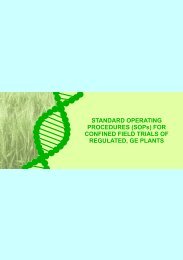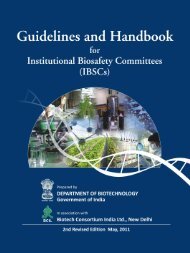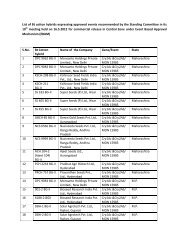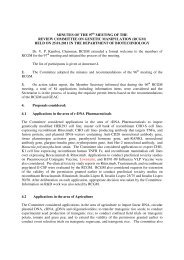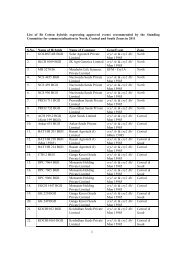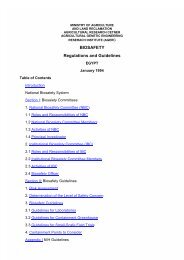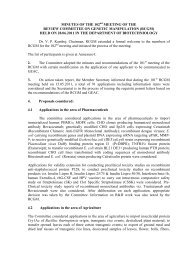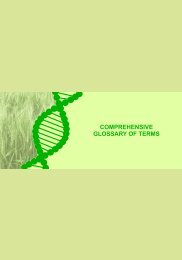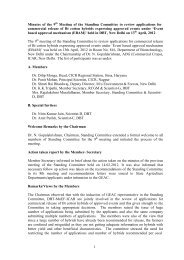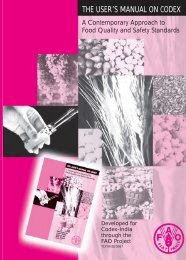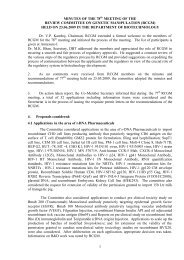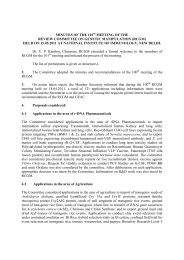Biosafety Guidelines For Research On Genetically Modified ...
Biosafety Guidelines For Research On Genetically Modified ...
Biosafety Guidelines For Research On Genetically Modified ...
Create successful ePaper yourself
Turn your PDF publications into a flip-book with our unique Google optimized e-Paper software.
APPENDIX 13: DESIGN OF ANIMAL FACILITIES<br />
Introduction<br />
Facilities for laboratory animals used for studies for genetic manipulation work of either<br />
an infectious or non-infectious nature should be physically separated from other<br />
activities such as animal production and animal quarantine.<br />
Animals under experiment may be either small laboratory animals (e.g., mice, rabbits) or<br />
large domestic animals (e.g., pigs, sheep, cattle). The requirements for the housing and<br />
maintenance of the animals may differ in scale as a result, but the microbiological safety<br />
principles are similar.<br />
Housing of transgenic animals<br />
The particular point of concern with transgenic animals is that the result of any insertion<br />
of novel genetic material into the genome of an animal is unpredictable, both in terms of<br />
the expression of the new genetic material and regarding the effect of this material on<br />
neighbouring genes. Furthermore, any escape of the novel genetic material through<br />
either the escape of transgenic animals or through their interbreeding with wild or<br />
uncontained animals is potentially irreversible.<br />
The containment for transgenic animals varies in different experiment systems. The<br />
nature of the containment required depend on the type of animal, the stages in the<br />
animals’ life cycle that will be involved in the work, the number to be used, and the<br />
nature of the genetic manipulation.<br />
Housing of infectious animals<br />
Points to consider for the housing of animals in which infectious agents have been used,<br />
including transgenic animals produced by infectious agents.<br />
1. The animal housing must comply with the NACLAR guidelines on the care and use<br />
of animals for scientific purposes.<br />
2. Laboratory animal facilities are an extension of the laboratory and may be integral to,<br />
and inseparable from, the laboratory.<br />
3. As a general principle, the biological and physical containment recommended for<br />
working with infectious agents in vivo and in vitro are comparable.<br />
4. The physical containment levels for work with infectious genetically manipulated<br />
animals follow the animal containment levels GA-BSL2 or GA-BSL3 as appropriate<br />
for the pathogen. Requirements for GA-BSL2 and GA-BSL3 animal containment<br />
facilities are set out in Appendices 14 and 15.<br />
Appendix - Page 26



